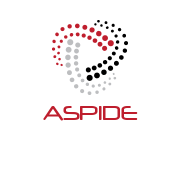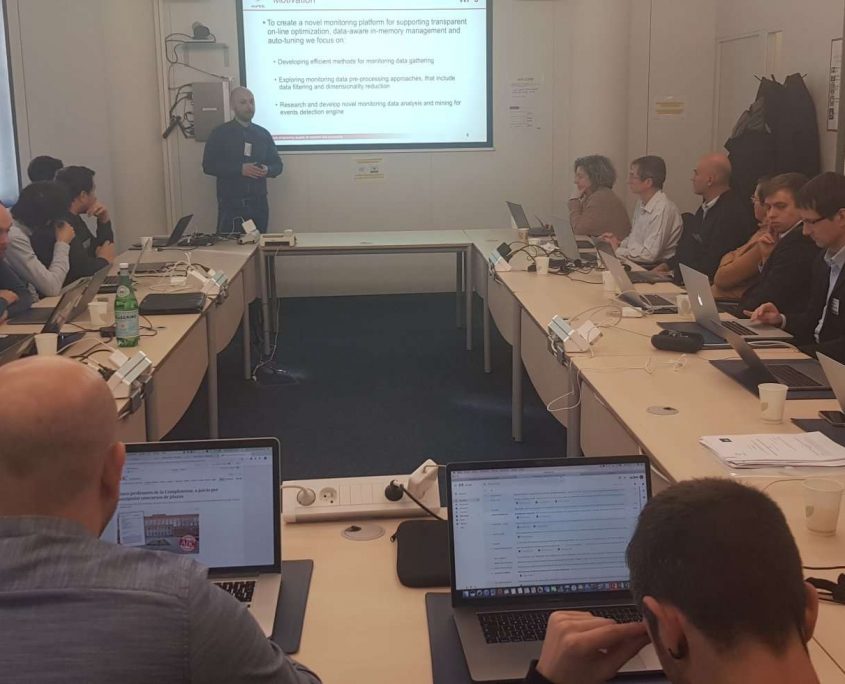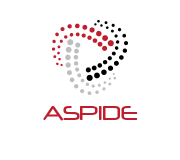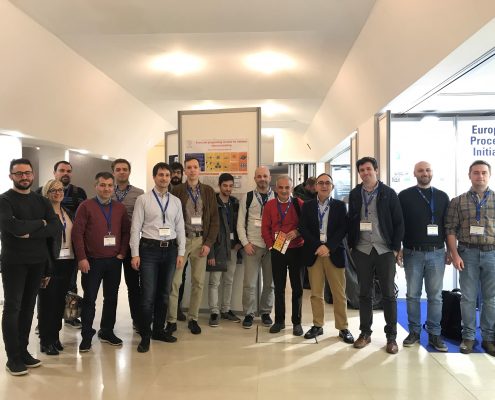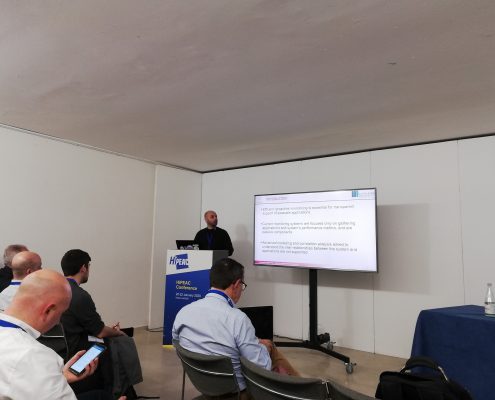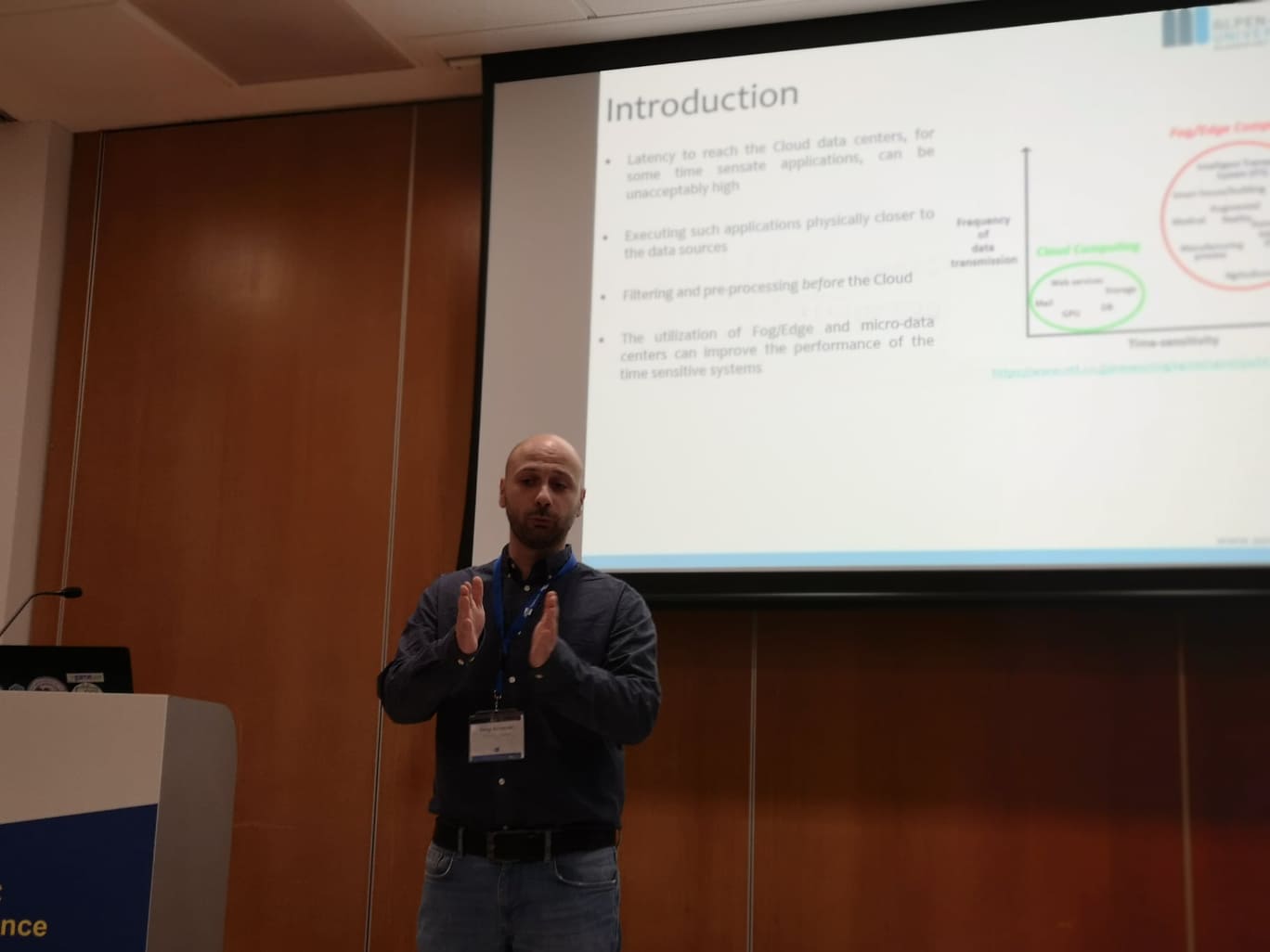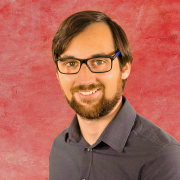The first review of the ASPIDE project took place on 25.02.2020 in the premises of the European Commission in Luxemburg. During the project review, a live demo of the platform for supporting extreme scale applications was presented and future research and developing activities were discussed with the reviewers.
We are #ARTICONF, we are people. We are federating trust.
Here is a photo of us today after our periodic review in Brussels. Thank you Peter Friess, @FraukeBehrendt, @joaomagalhaes, @gravesen for your feedback on our project of #decentralised #socialmedia ⛓️ pic.twitter.com/4ovzPJbHBj
— ARTICONF (@articonf) February 20, 2020
Interview with @RaduProdanAAU at #ESMH The days when people work together in an office, are over…
In the future, ‘teams’ will be social networks… able to connect to other federated networks of clouds and at the same time establish privacy and trust. https://t.co/GwaVaQTFFJ— ARTICONF (@articonf) January 30, 2020
The ITEC team participated in the HiPeac 2020 International Workshop on Exascale programing models for extreme data with a presentation with title “Monitoring data collection and mining for Exascale systems”. The ITEC team also attended the collocated ASPIDE meeting and actively participated in the decision of the next research activities in the project.
Title of the talk: Mobility-Aware Scheduling of Extreme Data Workflows across the Computing Continuum
Abstract: The appearance of the Fog/Edge computing paradigm, as an emanation of the computing continuum closer to the edge of the network, unravels important opportunities for execution of complex business and scientific workflows near the data sources. The main characteristics of these workflows are (i) their distributed nature, (ii) the vast amount of data (in the order of petabytes) they generate and (iii) the strict latency requirements. Current workflow management approaches rely exclusively on the Cloud Data Centers, which due to their geographical distance in relation to the data sources, could negatively influence the latency and cause violation of workflow requirements. It is therefore essential to research novel concepts for partial offloading of complex workflows closer to where the data is generated, thus reducing the communication latency and the need for frequent data transfers.
In this talk we will explore the potential of the computing continuum for scheduling and partial offloading of complex workflows with strict response time requirements and expose the resource provisioning challenges related to the heterogeneity and mobility of the Fog/Edge environment. Consequently, we will discuss a novel mobility-aware Pareto-based approach for task offloading across the continuum, which considers three optimization objectives, namely response time, reliability, and financial cost. Besides, the approach introduces a Markov model to perform a single-step predictive analysis on the mobility of the Fog/Edge devices, thus constraining the task offloading optimization problem to devices that do not frequently move (roam) within the computing continuum. As a conclusion to the talk, we will discuss the efficiency of the presented approach, based on both a simulated and a real-world testbed environment tailored for a set real-world biomedical, meteorological and astronomy workflows.
The paper “Making simulation results reproducible—Survey, guidelines, and examples based on Gradle and Docker” has been accepted and published in PeerJ Computer Science.
Authors: Wilfried Elmenreich, Philipp Moll, Sebastian Theuermann, Mathias Lux (Alpen-Adria-Universität Klagenfurt)
Abstract: This article addresses two research questions related to reproducibility within the context of research related to computer science. First, a survey on reproducibility addressed to researchers in the academic and private sectors is described and evaluated. The survey indicates a strong need for open and easily accessible results, in particular, reproducing an experiment should not require too much effort. The results of the survey are then used to formulate guidelines for making research results reproducible. In addition, this article explores four approaches based on software tools that could bring forward reproducibility in research results. After a general analysis of tools, three examples are further investigated based on actual research projects which are used to evaluate previously introduced tools. Results indicate that the evaluated tools contribute well to making simulation results reproducible but due to conflicting requirements, none of the presented solutions fulfills all intended goals perfectly.
The full paper can be found on: https://peerj.com/articles/cs-240/
Authors: Hadi Amirpour, Ekrem Çetinkaya (Alpen-Adria-Universität Klagenfurt), Christian Timmerer (Alpen-Adria-Universität Klagenfurt, Bitmovin), and Mohammad Ghanbari (University of Tehran, University of Essex)
Abstract: Adaptive HTTP streaming is the preferred method to deliver multimedia content on the internet. It provides multiple representations of the same content in different qualities (i.e., bit-rates and resolutions) and allows the client to request segments from the available representations in a dynamic, adaptive way depending on its context. The growing number of representations in adaptive HTTP streaming makes encoding of one video segment at different representations a challenging task in terms of encoding time-complexity. In this paper, information of both highest and lowest quality representations are used to limit Rate Distortion Optimization (RDO) for each Coding Unit Tree (CTU) in High Efficiency Video Coding. Our proposed method first encodes the highest quality representation and consequently uses it to encode the lowest quality representation. In particular, the block structure and the selected reference frame of both highest and lowest quality representations are then used to predict and shorten the RDO process of each CTU for intermediate quality representations. Our proposed method introduces a delay of two CTUs thanks to employing parallel processing techniques. Experimental results show a significant reduction in time-complexity over the reference software (38%) and state-of-the-art (10%) is achieved while quality degradation is negligible.
Keywords: HTTP adaptive streaming, Multi-rate encoding, HEVC, Fast block partitioning

